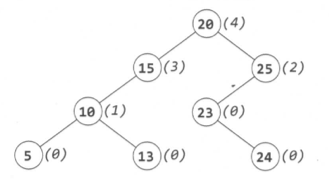Question
Implement a CircularArray class that supports an array-like data structure which can be efficiently rotated.
The class should use a generic type, and should support iteration via the standard for (Object : circuLarArray) notation.
Solution
First part of the question is solved by using an array and a pointer. The solution simplifies the question by fixing the array size (not a dynamic-resizing array).
The difficult part is how to write iterator.
Note that we should support Java Generics:
class MyCircularArray<T>
Implement Iterable Interface:
public class MyCircularArray<T> implements Iterable<T> {
}
Override iterator() method:
@Override
public Iterator<T> iterator() {
return new MyIterator<T>(this);
}
Write our own Iterator Class:
class MyIterator<T> implements Iterator<T> {
}
Finish it up
public class MyCircularArray<T> implements Iterable<T> {
@Override
public Iterator<T> iterator() {
return new MyIterator<T>(this);
}
class MyIterator<T> implements Iterator<T> {
@Override
public boolean hasNext() {
}
@Override
public T next() {
}
@Override
public void remove() {
}
}
}
It might be confusing when implementing Iterable and Iterator Class.
Code
public class MyCircularArray<T> implements Iterable<T> {
T[] items;
int head;
int cur;
public MyCircularArray(int size) {
// this is really important (casting the type)
items = (T[]) new Object[size];
head = 0;
cur = 0;
}
public void put(T item) {
items[cur++] = item;
cur = cur % items.length;
}
public T get(int i) {
int newIndex = (i + head) % items.length;
return items[newIndex];
}
public void rotate(int shiftRight) {
head += shiftRight;
head = head % items.length;
}
@Override
public Iterator<T> iterator() {
return new MyIterator<T>(this);
}
class MyIterator<T> implements Iterator<T> {
T[] items;
int head;
int count;
public MyIterator(MyCircularArray<T> array) {
this.items = array.items;
this.head = array.head;
this.count = 0;
}
@Override
public boolean hasNext() {
return this.count != items.length;
}
@Override
public T next() {
if (hasNext()) {
return items[(head + count++) % items.length];
}
return null;
}
@Override
public void remove() {
}
}
}

